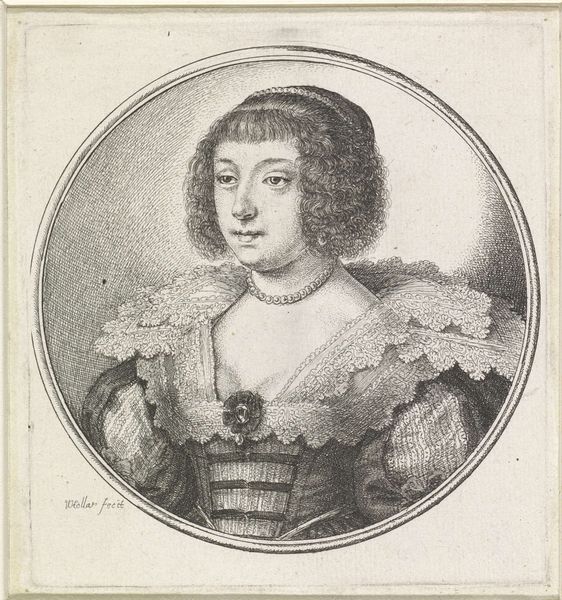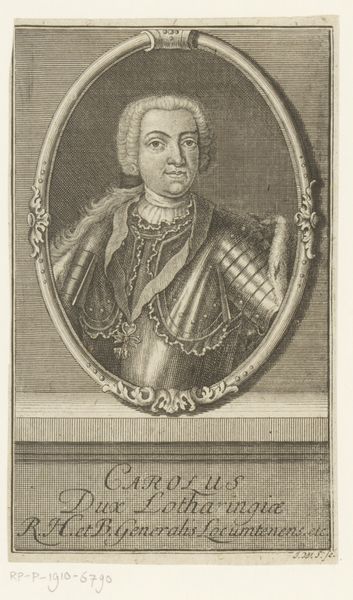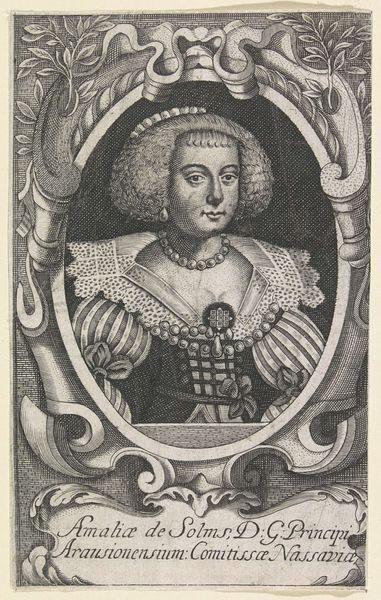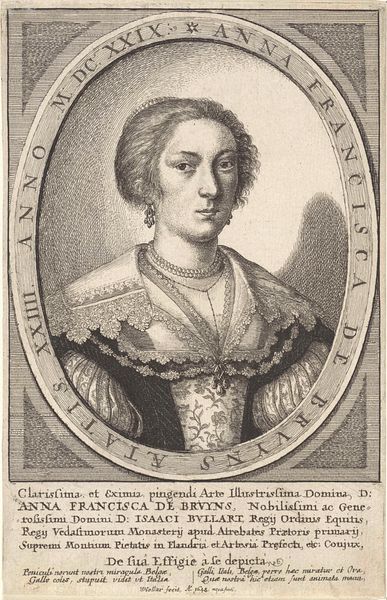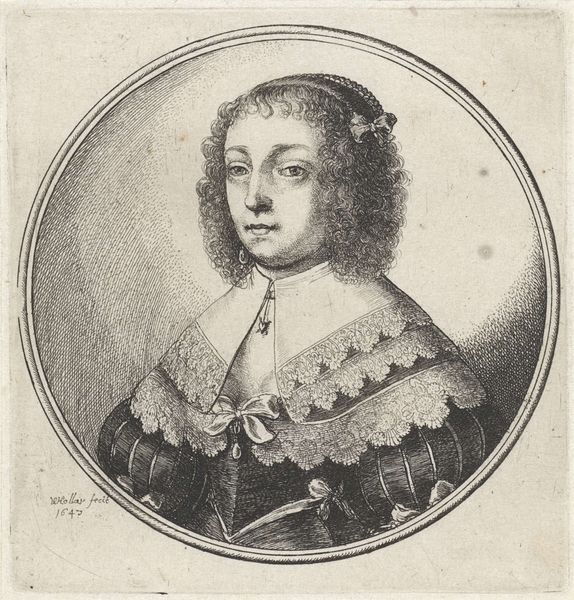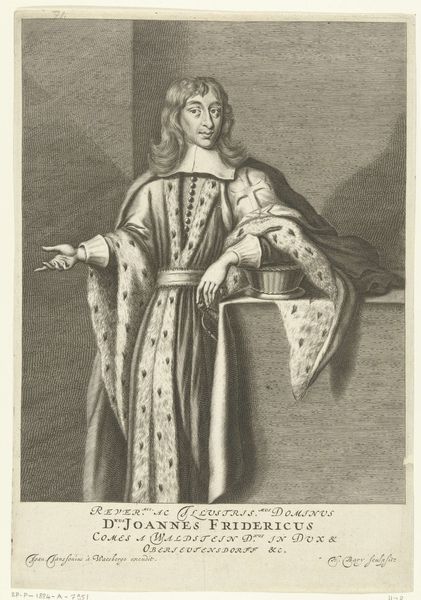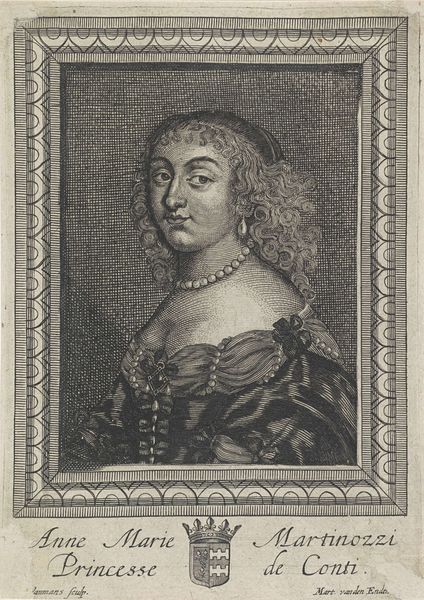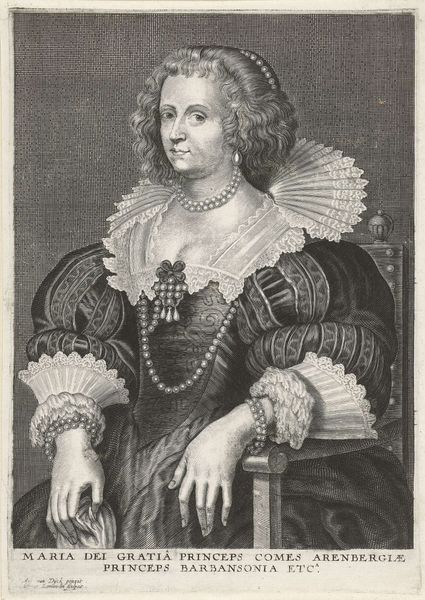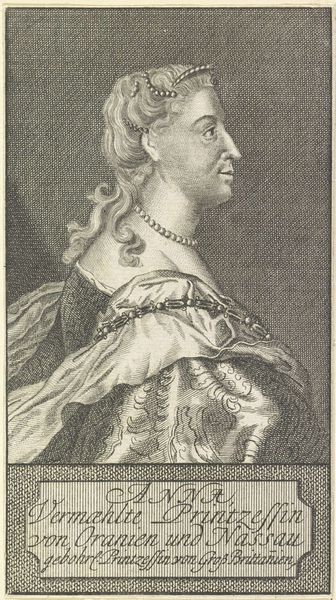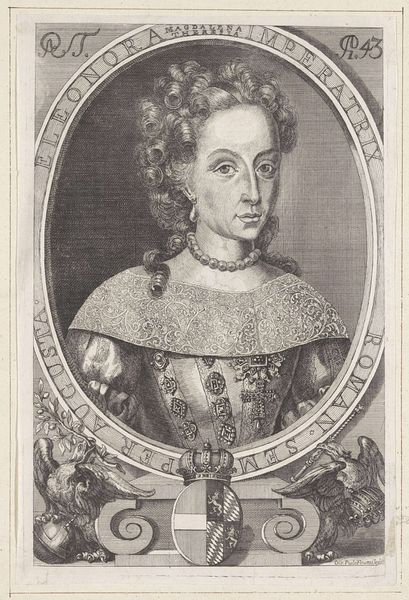
print, engraving
#
portrait
#
baroque
# print
#
engraving
Dimensions: height 67 mm, width 55 mm
Copyright: Rijks Museum: Open Domain
Curator: Here we see "Portrait of a Young Woman with Collar and Rosette" created between 1635 and 1636, attributed to Wenceslaus Hollar. The artwork, an engraving, currently resides in the Rijksmuseum. Editor: It has an almost unsettling stillness, doesn't it? The stark, etched lines lend her face an almost severe quality, but at the same time, there's a fragile grace. Curator: Indeed. The artist's meticulous engraving technique truly showcases the textures of her clothing—the delicate lace collar, the pearled necklace. Notice how the light catches those features, creating a contrast against the denser hatching used to define the background. It is so detailed for the print medium! Editor: That precise detailing almost feels like a societal codification, like he's not just depicting her, but a set of ideals—class, beauty, virtue perhaps. Who was she? Was this portrait intended for a particular purpose, say to mark an engagement or marriage? Curator: The absence of any definitive record regarding the woman's identity allows the artwork to become an image that is widely readable for many viewers over time, albeit mostly to upper classes. The baroque style in evidence presents us a very intriguing depiction. The woman is seen in strict profile, typical of depictions of powerful people at that time. Editor: I find it intriguing how Hollar manages to capture a sense of vulnerability alongside such controlled presentation. The etching method emphasizes linear structures that give her form its stoicism and seriousness. Yet there is softness, maybe that slight down turn of the lip, perhaps an invitation for compassion within those who view it? Curator: And there you observe the dichotomy—the public and private self—that Baroque artists frequently portrayed. Here, the rosette functions as a subtle but noteworthy signifier; maybe even a claim about identity in a portrait produced using printing, to guarantee circulation among the public! Editor: It makes you think about the constraints placed on women of that era, the delicate dance between visibility and restriction. Her carefully considered image is like a mirror that reflects their time's conventions and challenges. Curator: Exactly. We can now appreciate that how Hollar's art not only documented appearance but also the political realities of those early modern worlds through artistic expression. Editor: A brief glimpse that stirs within our souls—how wonderfully thought-provoking!
Comments
No comments
Be the first to comment and join the conversation on the ultimate creative platform.



